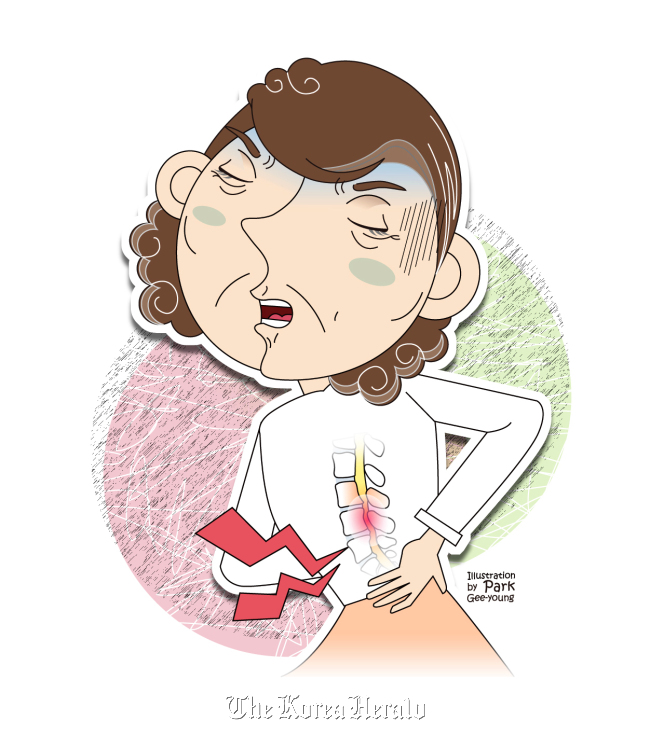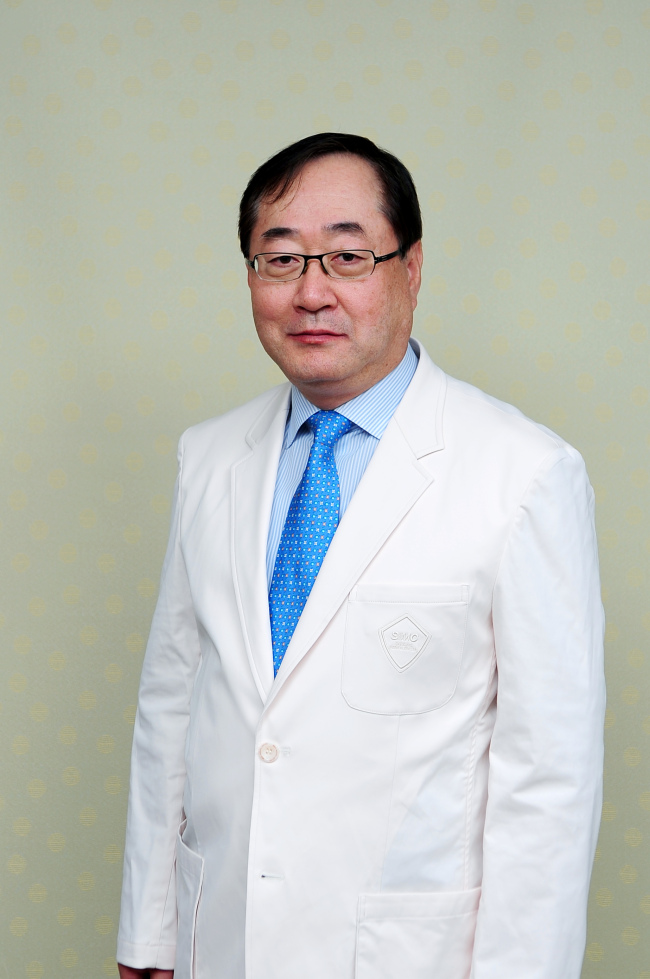The word “disk,” which Koreans often misuse as a name of a condition, refers to the structure that connects the bones in the spine. The correct term for the condition is “spine herniation of the intervertebral disk.”
Degenerative change of the lumbar disk is the most common cause of the problem and occurs in people in their late teens to their early 20s. The prevalence of herniation of the intervertebral disk increases significantly in the twenties up to the forties when people are more physically active.

Degenerative change of the lumbar disk causes changes to the intervertebral disk, which consists of vertebral pulp components, as well as fibrous rings that surround the pulp (refer to the attached image). First, the water content within the vertebral pulp decreases and there is an increase of fibrous collagen, making the pulp brittle instead of jelly-like. This then forms a weak area with cracks, as the water content of the vertebral pulp is reduced, leading to ineffective shock absorption.
The fibrous ring can rupture, causing the vertebral pulp to push out externally from the fibrous ring if excessive force, especially a turning force or a bending force, is applied.
However, vertebral herniation can occur even without excessive force. Thus, progressive degenerative changes in the lumbar disk, together with excessive force, rupture or herniate the disk when the fibrous rings can no longer withstand it.
Pins and needles in the leg, and pain in the lower back
The main symptoms of herniation of the intervertebral disk include lower back pain, or radiating pain in the lower limb. Approximately 87 percent of patients show both symptoms, while there are cases where patients only present with radiating pain in the lower limb. Radiating pain in the lower limb frequently occurs in patients with herniation of the intervertebral disk.
Common symptoms these patients experience are an expanding and tugging feeling, or pins and needles in the legs. These symptoms are important factors that are used to make the diagnosis. However, only pain that radiates below the level of the knees is significant. Other examination findings include abnormalities in the ability to raise the legs, with decreased sensation and muscle power. However, such findings are not always present. These are important clues that suggest disk herniation, but during the early stages of the condition, extremely abnormal findings may subside with time. When disk herniation is suspected from the patient’s symptoms and examination findings, myelogram, computed tomography, and magnetic resonance imaging should be used to find the lesion.
Surgery should be limited
There are two treatment methods for this condition ― conservative or surgical treatment. When selecting the treatment method, it is important to consider the duration of symptoms, severity, occupation, age, relapse frequency, and response to conservative treatment. Most patients recover with bed rest, pharmaceuticals, and physiotherapy.
Comparison of the surgical and conservative treatments has suggested that the group who received surgical treatment had a better reduction in lower back pain or radiating pain compared to the conservative treatment group after one year, but after 4 years, there was no significant difference between the two groups. Conservative treatments take longer than surgical treatment, but can produce a comparable satisfactory outcome. Therefore, operations should be limited.
Generally, people experience improvements in their symptoms within two weeks of bed rest, pharmacological treatment, and physiotherapy. However, if symptoms persist, epidural corticosteroid injections can be used. As patients save a few months with this method of treatment, they can wait to see if their symptoms improve within this time. Patients should only have bed rest for the first few days, and start early mobilization as soon as possible.
There is a tendency to avoid exercising when the patient has herniation of the intervertebral disk, but when the pain improves, it is helpful to do exercises that strengthen the abdominal and lower back muscles, such as whole body aerobic exercises and swimming (refer to the image below).
Laser treatment not better
When the symptoms do not improve with 6-8 weeks of conservative treatment, surgical or other non-conservative treatment methods can be considered. Non-conservative treatment includes surgical methods, such as nucleolus’, percutaneous nucleotomy, and laser disk decompression. Other non-surgical methods are used to decrease the pressure within the disk only in patients with no rupture of the fibrous ring. The indications for this method of treatment is same as for surgical treatment, and the success rate is between 70-80 percent, which is similar to other treatment methods. The emphasis on laser treatment in the media has led to patients preferring expensive laser treatment, but there is no evidence that laser treatment is better. Surgical treatment can be used for the same indications as for the three above-mentioned methods, as well as those with ruptured fibrous rings. More recently, surgical methods are becoming the preferred method, as the operations are done with surgical microscopes, using minimal incisions, which produce the same results.
 |
Lee Chong-suh |
By Lee Chong-suh
The author is a doctor at Department of Orthopedic Surgery at Samsung Medical Center and a professor of Sungkyunkwan University school of Medicine. ― Ed.








![[Today’s K-pop] Blackpink’s Jennie, Lisa invited to Coachella as solo acts](http://res.heraldm.com/phpwas/restmb_idxmake.php?idx=644&simg=/content/image/2024/11/21/20241121050099_0.jpg)
